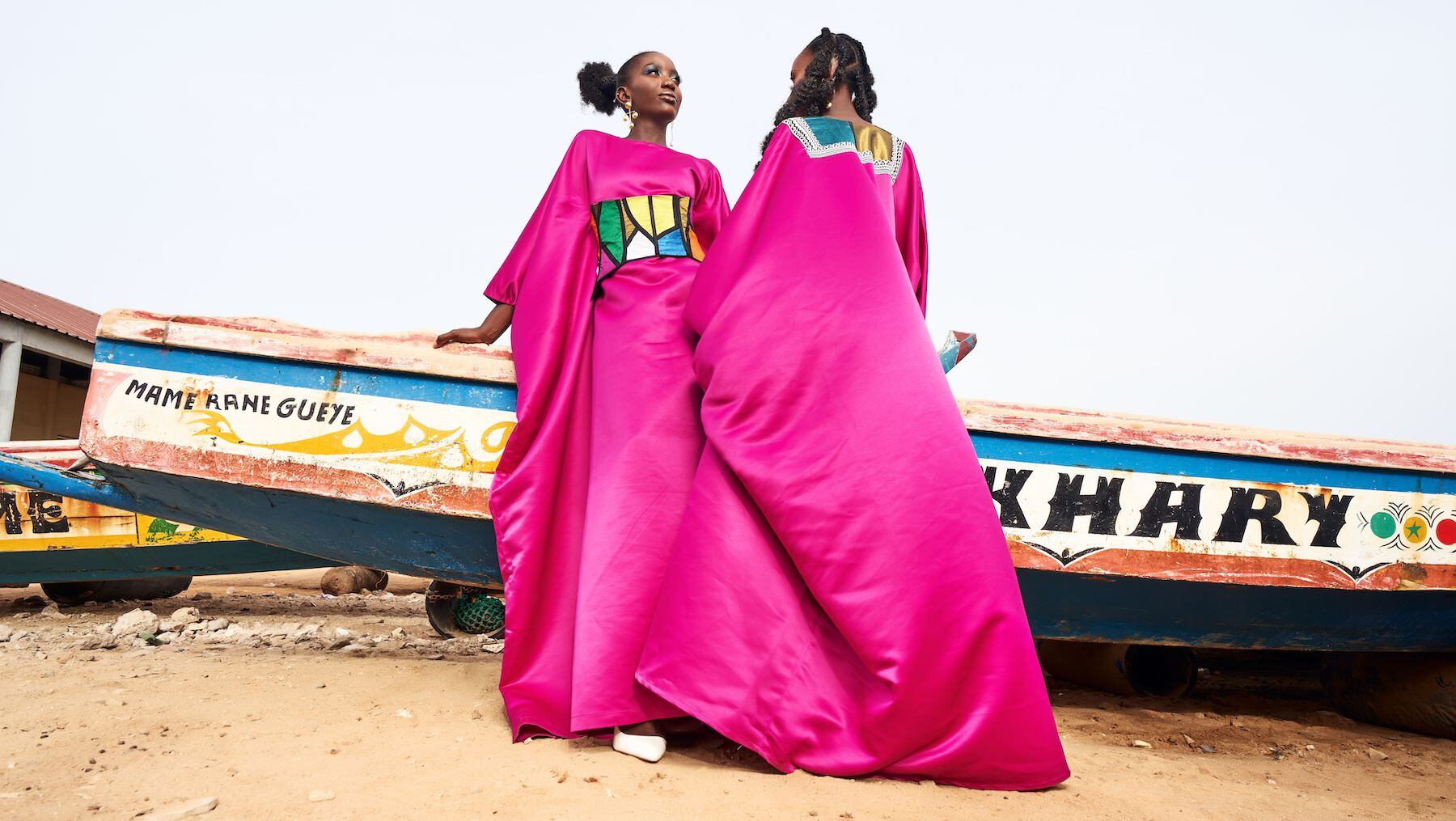‘Fashion Can Change Africa’: The Pioneering Designers Chasing a World of Opportunity
At a small fashion studio in Lagos, the designers and tailors are busy cutting clean lines through the swathes of fabric. “Cotton T-shirts were the first item we produced,” says designer Oroma Cookey-Gam, co-founder of This is Us, which makes contemporary Nigerian designs, from oversized shirts to jumpsuits and kaftans, using locally produced cotton.
To source the cotton, Cookey-Gam makes a monthly trip to Funtua textile mill, a factory in Katsina in the north, which is one of the few mills fully operational in the country. She then makes the three-hour journey to the Kofar Mata dye pit in Kano, the oldest pit in Nigeria, where the cloth is hand-dyed for up to eight hours into shades of indigo.
Cookey-Gam used to import cotton from Morocco and Turkey but in 2016 she embarked on a year-long search to source materials in her home country. While two-thirds of African countries produce cotton, with some of the continent’s largest producers in west Africa, more than 81 percent of it is exported out of sub-Saharan countries, leaving little to be used locally. A recent UNESCO report warned that exports were restricting the growth of the region’s textile and fashion industries, harming its economic opportunities.
“Africa is exporting something which could really create a huge industry and enormous number of jobs,” says Ernesto Ottone, UNESCO’s assistant director-general for culture.
Nigeria’s textile industry, like others in Africa, took off in the 60s and 70s but declined as secondhand and foreign-made clothes poured into African markets following a wave of trade liberalisation policies. Now, businesses like This is Us face huge challenges in trying to source materials.
Ginneries – where the seeds from cotton are removed – in Nigeria deal with bulk orders so are less interested in selling to fashion startups, says Cookey-Gam. “When we first went to the mill, they didn’t take us seriously. They said they can’t work with fashion because the orders are not big enough,” she says, explaining how she partnered up with other brands to make bulk orders.
Global interest in African-made goods has grown in recent years, spurred on by modern depictions of the continent in culture, such as the Black Panther films, and the explosion of the Afrobeats genre of music. Prominent Black figures including Beyoncé, Naomi Campbell and Chimamanda Ngozi Adichie have promoted creations by designers from the region and its diaspora.
Contemporary takes on African fabrics and structures in fashion have been embraced by younger people. Designer Sébastien Bazemo from Burkina Faso has helped bring the colourful fabric Kôkô Dunda back into style. And there are now more than 30 fashion weeks across the continent every year.
“It’s a season of ownership,” says entrepreneur Omoyemi Akerele who runs Lagos’s annual fashion week. “Before now, [the African fashion industry] pandered a bit to the Eurocentric gaze but in the last couple of years, creators and designers are doubling down to communicate and re-emphasise who they are in a way that’s true to themselves and the communities they represent.”
“Made in Africa” movements have prospered in recent years, especially among the continent’s growing middle class, but African creatives say their designs remain inaccessible to many on the continent due to the high costs of production and importing of basic textiles, which affects overall pricing. Clothes from This is Us cost from about 50,000 to 150,000 Nigerian naira (£50 to £150), and its main clients are Nigerian creatives and Africans in the diaspora.
Nigerien designer Alphadi (Sidahmed Seidnaly) supports calls for African governments to limit imports of textiles and ramp up production of more than just cotton. While the visibility of the continent’s fashion has grown, policy and investor support for the sector remains wanting, he says.
“The difficulty of being an African designer is not being understood by investors, buyers and policymakers, who can make African fashion take off,” he says, citing big European names in fashion. “People bet on them, and that can be the difference between making it or not in this industry.”
Despite being one of the continent’s fashion pioneers, the designer, who runs his business in Niamey, Niger’s capital, and in Ivory Coast and Morocco, says he has had to invest a lot of his own money to stay in business.
African fashion investors say that investments in individual designers are common but do not address structural issues that financiers and policymakers must deal with for the industry to flourish, such as local production capacity. Without such measures, they say, investments may lead only to short-lived success rather than sustainable businesses that can be scaled up.
Roberta Annan, founder of the Impact Fund For African Creatives, a body that invests in creative businesses across Africa, says: “[We need to] look at building the infrastructure and giving the capacity for designers to thrive – for them to access different textiles locally.”
IFFAC supports sustainable fashion businesses with grants and investments of up to £1.7m to build the sector. It recently bought a factory in Ghana that was previously government-owned to increase local textile manufacturing capacity. Designers say measures of this kind can be transformative.
“African fashion is still very young, and we need [various] elements to make things at high quality,” says Cookey-Gam. “Fashion employs a lot of people and is a tool we can harness to make a difference in people’s lives. It can change the continent.”
By Caroline Kimeu and Gabriella Opara

:quality(70)/cloudfront-eu-central-1.images.arcpublishing.com/businessoffashion/X6W45QNFLZB45DRCFJCZJEYNR4.jpg)




